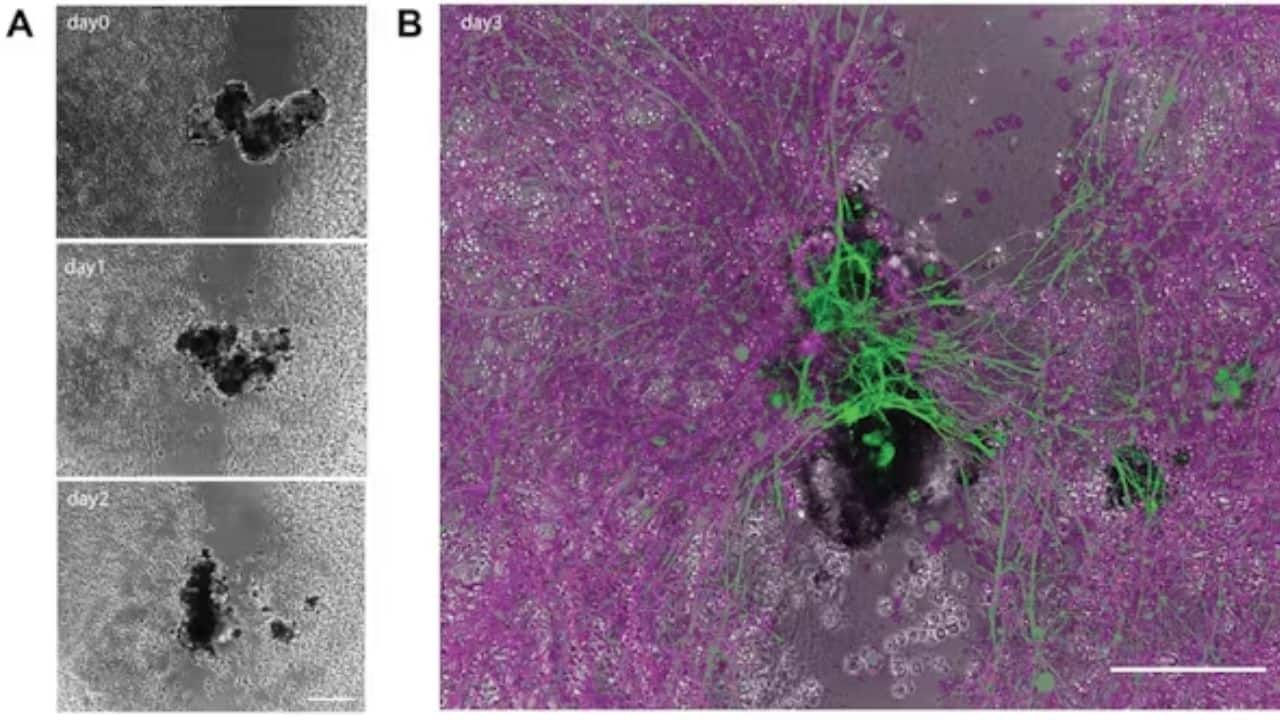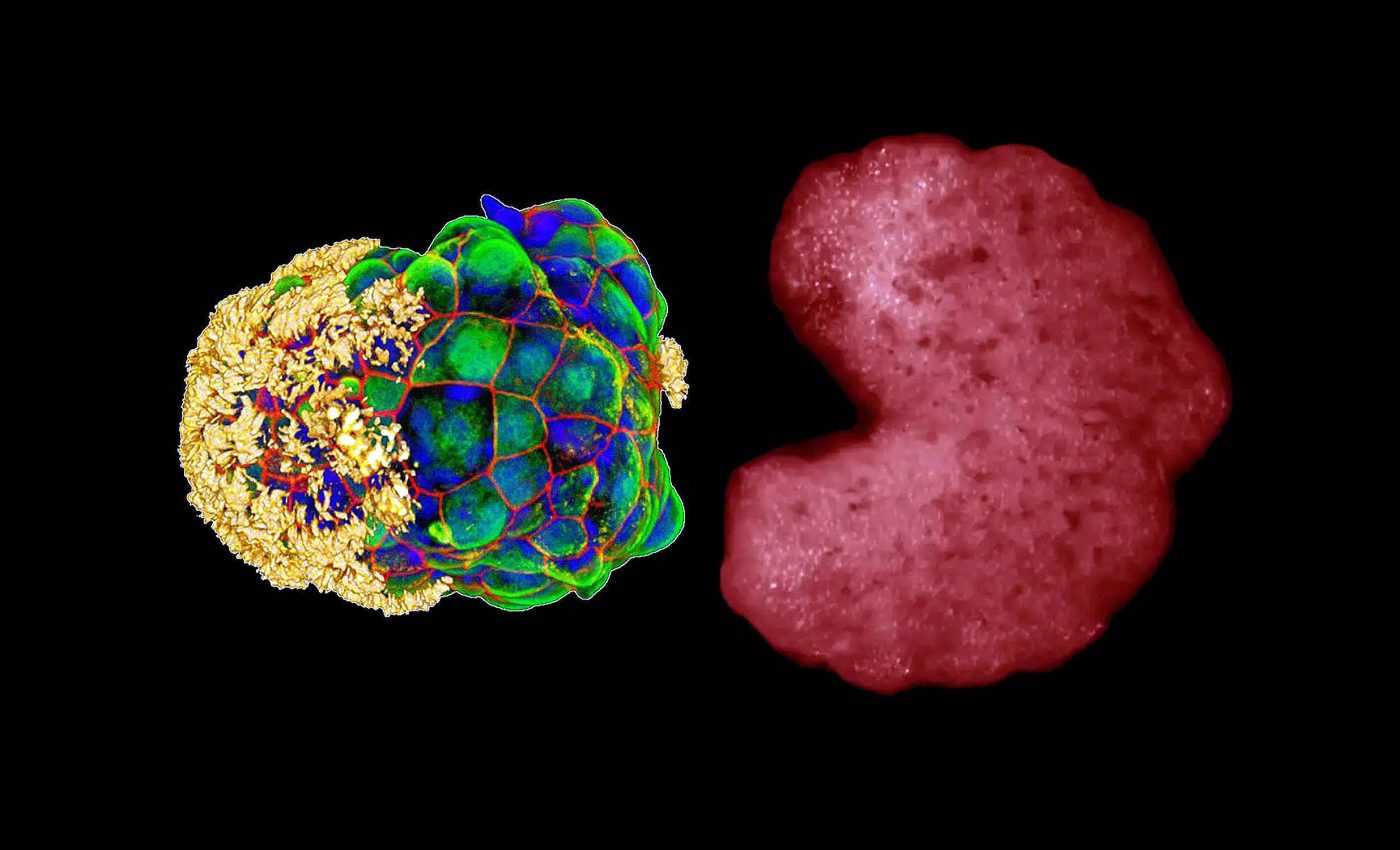“New Discoveries Reveal Cells From Deceased Organisms Can Reorganize Into New Life Forms, Challenging Our Understanding of Life and Death calling it a Third State”
For centuries, life and death have been viewed as two opposing forces, firmly divided by the boundaries of biology. Death has been traditionally understood as the irreversible cessation of all vital functions, marking the end of an organism’s existence. However, recent discoveries have started to challenge this long-standing dichotomy, revealing a mysterious “third state” that exists beyond the conventional limits of life and death. This emerging phenomenon involves the unexpected ability of cells from deceased organisms to reorganize and give rise to new multicellular life forms, defying our traditional understanding of mortality.
Defining the Third State:
Typically, death is defined as the point at which an organism’s biological processes cease irreversibly. This means that once an organism dies, its cells, tissues, and organs are expected to follow suit, deteriorating and breaking down over time. However, some cells, particularly those used in organ transplants, continue to function long after the organism’s death, posing intriguing questions about the boundaries of life and death. How do some cells persist and even thrive after an organism has died? What mechanisms enable this remarkable resilience?
Recent research has uncovered fascinating insights into this mystery. Scientists have observed that under certain conditions, cells from deceased organisms can transform into new life forms, giving rise to multicellular structures that perform entirely new biological functions. This process reveals a “third state” that exists between life and death, where cells are neither fully alive in the traditional sense nor completely dead. Instead, they occupy a liminal space where they can reorganize, replicate, and evolve into new forms of life.

The Emergence of Xenobots: A Striking Example for Third state:
A notable discovery in this “third state” involves frog embryo cells, which have been shown to possess the ability to reorganize into entirely new multicellular organisms. In a groundbreaking experiment, scientists extracted skin cells from deceased frog embryos and placed them in a controlled laboratory environment. To their astonishment, these cells did not simply decay or lose function as expected. Instead, they began to reorganize into new life forms known as xenobots. These xenobots exhibited behaviors and functions that had nothing to do with their original biological roles in the frog’s body.
In their natural state, frog skin cells are responsible for protecting the frog from its environment. Yet in the lab, when placed in a dish with the right conditions—such as nutrients, oxygen, and even bioelectric signals—these cells reorganized into entirely new organisms. These xenobots demonstrated complex behaviors, including movement and self-repair, traits far removed from their original purpose. One of the most surprising aspects of these xenobots was their ability to use cilia, hair-like structures typically used by frogs to move mucus, for navigation. These repurposed cilia allowed the xenobots to move through their environment with a degree of autonomy.
Even more astonishing was the method of reproduction observed in xenobots. Unlike traditional cellular replication, where cells grow and divide through mitosis, xenobots employed a form of kinematic self-replication. This means that rather than growing and dividing, they physically reconstructed their own structure, rearranging their components to replicate without increasing in size. This unique form of replication further illustrates how cells in this “third state” behave in ways that defy traditional biological expectations.

Human Lung Cells and the Third State:
The phenomenon of the “third state” is not limited to frog cells. Another groundbreaking study demonstrated how human lung cells, when placed in specific lab conditions, could self-assemble into tiny, organism-like structures capable of both movement and self-repair. These tiny constructs exhibited behaviors and functions that went far beyond the expected capabilities of lung cells, further demonstrating the extraordinary potential of cells after death.
This raises profound questions about the nature of life and the boundaries of death. What mechanisms enable these post-mortem transformations? What triggers cells to reorganize and take on new roles? The answers to these questions remain largely unknown, but ongoing research is beginning to unravel the complex interplay of factors that allow certain cells to persist and even thrive after death.
Factors Influencing Cell Survival Post-Mortem (third state):
One of the most crucial aspects of this emerging field of study is understanding the conditions that allow cells to survive and reorganize after an organism’s death. Several factors influence whether cells are able to persist in this “third state,” including environmental conditions, metabolic activity, and preservation techniques.
Environmental conditions play a significant role in determining cell survival. For instance, cells in tissues that are rapidly oxygen-deprived after death typically die quickly, while cells that are kept in oxygenated environments may survive for extended periods. Additionally, certain types of cells are more resilient than others. In humans, white blood cells can remain viable for up to 60 hours after death, while mouse skeletal muscle cells have been shown to survive for up to 14 days in laboratory conditions.
Preservation techniques, such as cryopreservation, also play a key role in extending the life of cells beyond the death of the organism. By freezing tissues at extremely low temperatures, scientists can preserve cells in a state of suspended animation, allowing them to function as living cells would once they are thawed. This technique is commonly used in organ donation, where tissues like bone marrow can be preserved and transplanted into patients long after the donor’s death.

Implications for Medicine and the Future:
Understanding the mechanisms that allow cells to survive and reorganize after death has profound implications for the future of medicine, particularly in the field of regenerative medicine and organ transplantation. If scientists can unlock the secrets of this “third state,” it may be possible to develop new techniques for repairing damaged tissues, regenerating organs, and even extending the lifespan of cells for medical purposes.
One of the most exciting possibilities is the potential for personalized medicine. By harnessing the ability of cells to reorganize and take on new functions, doctors may one day be able to create custom treatments tailored to an individual’s unique cellular makeup. This could revolutionize the treatment of conditions such as organ failure, tissue damage, and degenerative diseases, offering new hope to patients who currently have few options.
However, many aspects of the “third state” remain shrouded in mystery. While researchers have made remarkable strides in understanding how cells can survive and reorganize after death, much remains unknown about the precise mechanisms that drive these transformations. Ongoing research will be critical in unraveling these mysteries and unlocking the full potential of this fascinating new frontier in biology.
Conclusion
The discovery of the “third state” beyond life and death challenges long-standing assumptions about the nature of existence. By revealing how cells from deceased organisms can reorganize and give rise to new life forms, these findings open up a world of possibilities for science and medicine. As researchers continue to investigate this enigmatic phenomenon, we may one day unlock the secrets of life after death, offering profound insights into the resilience of life itself.


